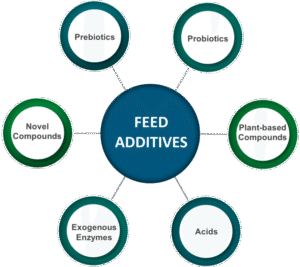The order Araneae, commonly known as spiders, is one of the largest and most diverse groups within the class Arachnida. Below is a detailed description of their identified morphological and anatomical features:
General Description of Araneae (Spiders)
1. Body Segmentation
o Two-Part Body Structure: Like other arachnids, spiders have a body divided into two main sections:
Prosoma (Cephalothorax): The front segment that contains the eyes, mouthparts (chelicerae), pedipalps, and legs. It is covered by a hard exoskeleton called the carapace.
Opisthosoma (Abdomen): The rear segment, connected to the prosoma by a narrow stalk called the pedicel. It houses the silk glands, reproductive organs, digestive system, and respiratory organs.
2. Appendages
o Chelicerae: Paired mouthparts ending in sharp fangs, used to inject venom into their prey. The fangs are hollow and connected to venom glands located within the prosoma.
o Pedipalps: Located near the mouth, pedipalps are used for sensing the environment, handling food, and in males, transferring sperm to females during mating. In males, pedipalps are often modified into specialized structures for reproductive purposes.
o Legs: Spiders have four pairs of jointed legs, each with seven segments: coxa, trochanter, femur, patella, tibia, metatarsus, and tarsus. The legs play a crucial role in locomotion, web construction, and prey capture.
3. Eyes
o Simple Eyes (Ocelli): Spiders typically have eight simple eyes arranged in various patterns depending on the species. Some species may have fewer eyes. These eyes provide limited vision, primarily for detecting movement and light changes.
o Vision Adaptations: Certain spiders, such as jumping spiders (Salticidae), have highly developed vision, which is essential for hunting and navigating their environment.
4. Silk Production
o Spinnerets: Located at the rear of the opisthosoma, spinnerets are silk-spinning organs used to produce different types of silk. The silk is used for various purposes, including web construction, prey capture, egg sac formation, and creating draglines for movement.
o Silk Glands: Spiders possess specialized glands that produce silk proteins, which harden upon exposure to air. Different glands produce silk with unique properties, depending on its intended use.
5. Respiratory System
o Book Lungs: Spiders have book lungs that resemble stacked pages of a book, which facilitate gas exchange. They are located within the opisthosoma.
o Tracheal System: Some spiders also have a tracheal system that consists of small tubes that transport oxygen directly to the body’s tissues.
6. Venom
o Venom Glands: Located in the prosoma, venom glands are connected to the chelicerae. The venom is used to immobilize or kill prey, as well as to begin the digestive process by liquefying the prey’s tissues.
o Venom Functions: While venom can be dangerous to prey, most spider venoms are harmless to humans. However, a few species, like the black widow or brown recluse, have venom potent enough to cause medical symptoms in humans.
7. Digestive System
o External Digestion: Spiders inject digestive enzymes into their prey to liquefy the tissues before ingestion. They then suck up the liquefied contents through their mouth.
o Midgut: The midgut plays a central role in further digestion and nutrient absorption, while undigested material passes into the hindgut for excretion.
8. Reproductive System
o Sexual Dimorphism: Males and females often differ in size, color, and body structure. Males usually have smaller bodies but larger pedipalps, used for sperm transfer.
o Mating Rituals: Males perform elaborate courtship displays to attract females and avoid being mistaken for prey. Sperm is transferred via the pedipalps to the female’s reproductive organs.
o Egg Sac: Females lay their eggs in silk egg sacs, which they protect and sometimes carry until the spiderlings hatch.
Behavioral Traits of Araneae
• Web Construction: Web-building spiders create intricate silk structures to trap prey. Different families produce different types of webs, such as orb webs, funnel webs, or cobwebs.
• Hunting Strategy: Some spiders are active hunters that do not use webs but rely on speed, agility, and camouflage to catch prey.
• Environmental Adaptation: Spiders can be found in nearly every habitat on Earth, from rainforests to deserts, and they play essential roles in controlling insect populations.
Summary of Morphological Characteristics
• Body Regions: Two main parts — prosoma (cephalothorax) and opisthosoma (abdomen).
• Legs: Four pairs of jointed legs.
• Mouthparts: Chelicerae with venom-injecting fangs.
• Silk Production: Spinnerets and silk glands for web-building.
• Respiration: Book lungs and tracheal systems.
• Venom: Used to subdue prey and aid in digestion.
• Eyes: Simple eyes adapted for detecting light and movement.
• Reproduction: Sexual dimorphism and specialized mating structures.
This detailed description helps to understand the anatomy, morphology, and adaptations of spiders, emphasizing their role as skilled predators and important members of various ecosystems.
Thank you for reading. Don't forget to subscribe & share!









